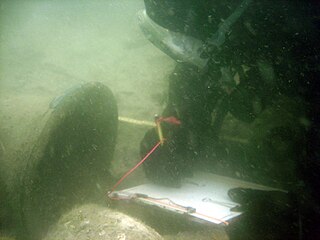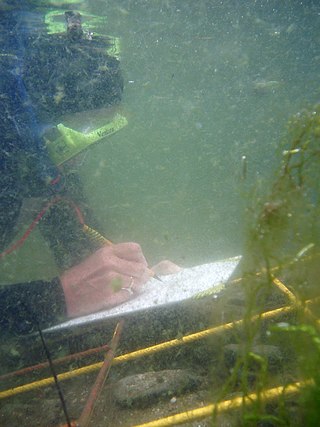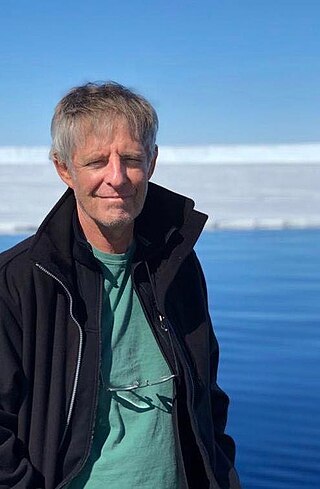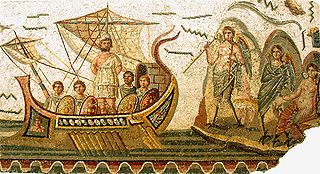Related Research Articles

Maritime archaeology is a discipline within archaeology as a whole that specifically studies human interaction with the sea, lakes and rivers through the study of associated physical remains, be they vessels, shore-side facilities, port-related structures, cargoes, human remains and submerged landscapes. A specialty within maritime archaeology is nautical archaeology, which studies ship construction and use.

Underwater archaeology is archaeology practiced underwater. As with all other branches of archaeology, it evolved from its roots in pre-history and in the classical era to include sites from the historical and industrial eras. Its acceptance has been a relatively late development due to the difficulties of accessing and working underwater sites, and because the application of archaeology to underwater sites initially emerged from the skills and tools developed by shipwreck salvagers. As a result, underwater archaeology initially struggled to establish itself as actual archaeological research. This changed when universities began teaching the subject and a theoretical and practical base for the sub-discipline was firmly established in the late 1980s. Underwater archaeology now has a number of branches including, maritime archaeology: the scientifically based study of past human life, behaviours and cultures and their activities in, on, around and (lately) under the sea, estuaries and rivers. This is most often effected using the physical remains found in, around or under salt or fresh water or buried beneath water-logged sediment. In recent years, the study of submerged WWII sites and of submerged aircraft in the form of underwater aviation archaeology have also emerged as bona fide activity.

A shipwreck is the wreckage of a ship that is located either beached on land or sunken to the bottom of a body of water. Shipwrecking may be intentional or unintentional. There were approximately three million shipwrecks worldwide as of January 1999, according to Angela Croome, a science writer and author who specialized in the history of underwater archaeology.

In maritime law, flotsam,jetsam,lagan, and derelict are specific kinds of shipwreck. The words have specific nautical meanings, with legal consequences in the law of admiralty and marine salvage. A shipwreck is defined as the remains of a ship that has been wrecked—a destroyed ship at sea, whether it has sunk or is floating on the surface of the water.

The St. Augustine Light Station is a privately maintained aid to navigation and an active, working lighthouse in St. Augustine, Florida. The current lighthouse stands at the north end of Anastasia Island and was built between 1871 and 1874. The tower is the second lighthouse tower in St. Augustine, the first being lit officially by the American territorial government in May 1824 as Florida's first lighthouse. However, both the Spanish and the British governments operated a major aid to navigation here including a series of wooden watch towers and beacons dating from 1565.

The Nautical Archaeology Society (NAS) is a charity registered in England and Wales and in Scotland and is a company limited by guarantee.
David Gibbins is an underwater archaeologist and a bestselling novelist.

The archaeology of shipwrecks is the field of archaeology specialized most commonly in the study and exploration of shipwrecks. Its techniques combine those of archaeology with those of diving to become Underwater archaeology. However, shipwrecks are discovered on what have become terrestrial sites.

James Preston Delgado is a maritime archaeologist, historian, maritime preservation expert, author, television host, and explorer.
Tryall was a British East India Company-owned East Indiaman launched in 1621. She was under the command of John Brooke when she was wrecked on the Tryal Rocks off the north-west coast of Western Australia in 1622. Her crew were the first Englishmen to sight or land on Australia. The wreck is Australia's oldest known shipwreck.

Mensun Bound is a British maritime archaeologist born in Stanley, Falkland Islands. He is best known as director of exploration for two expeditions to the Weddell Sea which led to the rediscovery of the Endurance, in which Sir Ernest Shackleton and a crew of 27 men sailed for the Antarctic on the 1914–1917 Imperial Trans-Antarctic Expedition. The ship sank after being crushed by the ice on 21 November 1915. It was rediscovered by the Endurance22 expedition on 5 March 2022.
SS Xantho was a steam ship used in the colony of Western Australia as a pearling transport and mothership, as a tramp steamer, carrying passengers, including Aboriginal convicts and trade goods before she sank at Port Gregory, Western Australia in 1872. She was powered by a horizontal trunk engine.

Honor Frost was a pioneer in the field of underwater archaeology, who led many Mediterranean archaeological investigations, especially in Lebanon, and was noted for her typology of stone anchors and skills in archaeological illustration.

Innes McCartney is a British nautical archaeologist and historian. He is a Visiting Fellow at Bournemouth University in the UK.

Discovered by divers from the French Navy Diving School in 1967, the archaeological investigations of the Roman wreck at Madrague de Giens constituted the first large scale, "truly scientific underwater excavation[s] carried out in France". The wreck lies at around 18 to 20 metres depth off the coast of the small fishing port of La Madrague de Giens on the Giens Peninsula, east of Toulon, on the southern Mediterranean coast of France. Sunk around 75–60 BCE, the vessel has been found to be "a large merchantman of considerable tonnage—400 tons deadweight with a displacement of around 550 tons", making it one of the largest Roman wrecks excavated, with only the wreck at Albenga, Italy exceeding it at the time of its discovery. The vessel wrecked at Madrague de Giens measured around 40 metres in length; "showed a sharp bottom with "wine glass" section and a prominent keel creating a large leeboard"; displayed extended raking of the stem and stern; and had two masts. The hull was characterised by a reverse stempost in the shape of a ram with a big cutwater which "must have given... [the] craft high-performance sailing qualities". The ship sank while transporting a large cargo of wine and black glazed pottery from Italy. It is not known why it sank.
The Society for Underwater Historical Research (SUHR) was an amateur maritime archaeology organisation operating in South Australia (SA). It was formed in 1974 by recreational scuba divers and other persons to pursue an interest in maritime archaeology and maritime history. The SUHR was renamed as the South Australian Archaeology Society in March 2012 as part of a plan to expand its activities beyond maritime archaeology to include other archaeological disciplines.
Ralph K. Pedersen is a nautical archaeologist from Levittown New York, United States. He was the DAAD Gastdozent für Nautische Archäologie at Philipps-Universität Marburg 2010–2013, and has been distinguished visiting professor in anthropology and Knapp Chair in Liberal Arts at the University of San Diego, and the Whittlesey Chair Visiting Assistant Professor in the department of history and archaeology at the American University of Beirut. He has been teaching online courses in archaeology in the History Department at Southwestern Assemblies of God University since 2009.
The Kennemerland was a Dutch East Indiaman that was lost off the Out Skerries, Shetland, in 1664. It was carrying cargo from the Netherlands to the Dutch East Indies, and had taken the northern route to avoid interception by the English, since the Second Anglo-Dutch War was expected to start soon. There were just three survivors. The islanders salvaged what they could, but there were disputes over ownership of the spoil. The vessel's excavation in the 1970s was one of the earliest exercises in the new discipline of maritime archaeology.
References
- ↑ Muckleroy, K., 1976. The integration of historical and archaeological data concerning an historic wreck site: The 'Kennemerland'. World Archaeology 7.3 pp 280-289.
- ↑ Muckleroy, K., 1978. Maritime Archaeology. Cambridge University Press ISBN 0521220793
- ↑ Muckleroy, K., 1978. Maritime Archaeology. Cambridge University Press, pp 157-214 ISBN 0521220793
- ↑ Muckleroy, K., 1978. Maritime Archaeology. Cambridge University Press, p. 216 ISBN 0521220793
- ↑ Muckleroy, K. 1980, Archaeology under water: an atlas of the world's submerged sites. McGraw-Hill. ISBN 0070439516
- ↑ Muckelroy, Keith, 1977: A Possible Seventeenth-Century Dutch Backstaff. The Mariner's Mirror Vol. 63, London, pp 213-214, ill. A find from the Dutch East-Indaman Kennmerland which was at the Shetland Ilands in 1664.
- ↑ Muckelroy, Keith. 1981. Middle Bronze Age trade between Britain and Europe: a maritime perspective. Proceedings of the Prehistoric Society. Vol 47. pp275-297
- ↑ Muckelroy, Keith. 1980. Two bronze age cargoes in British waters. Antiquity Vol 54 number 211 pp100-109
- ↑ Muckelroy, K 1976. Enclosed ambulatories in Romano-Celtic temples in Britain Britannia vol 7, pp173-91.
- ↑ "Western Australian Museum - North Gallery (Xantho)". Archived from the original on 2006-08-19. Retrieved 2006-07-26.
- ↑ Laughton, Leonard George Carr; Anderson, Roger Charles; Perrin, William Gordon (1980). The Mariner's Mirror. Society for Nautical Research.